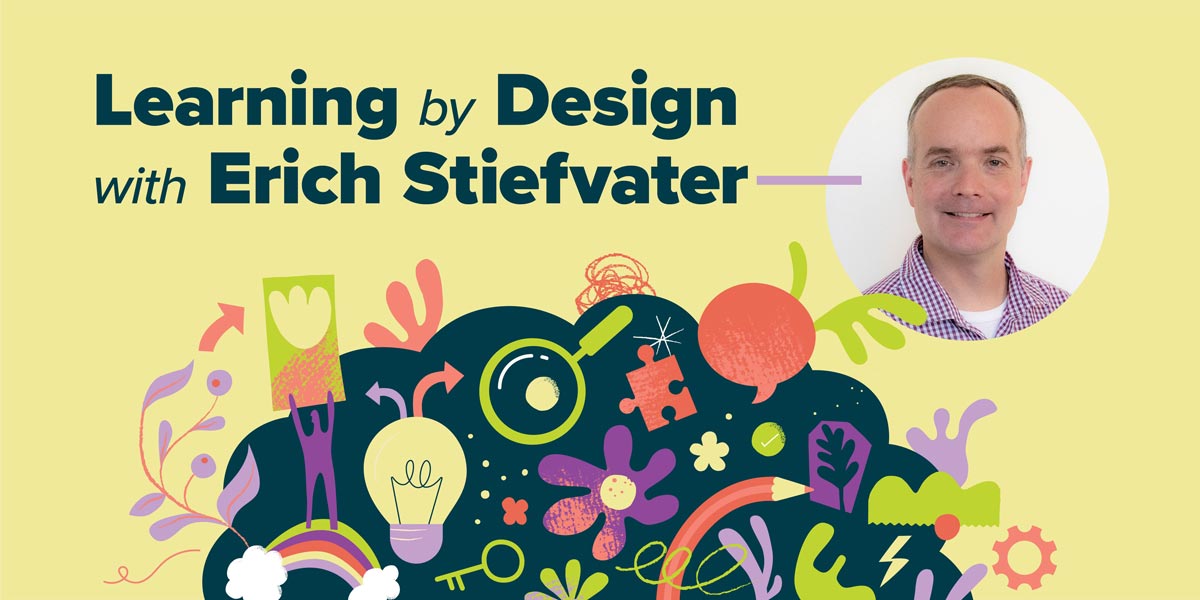Effective Design for Adult Learners

It may sound obvious, but adults learn differently from children. Brain science shows that while a child's brain is flexible and quick to absorb new information, the mature adult brain is better at managing and solving complex problems, switching between tasks, and making detailed plans. In addition, children and adults have different motivations for understanding and applying new information.
In this installment of our Inclusive by Design series, we explore how adult learning principles can help ensure that all adult learners, regardless of their backgrounds and experiences, can benefit from education, training, and coaching.
By incorporating principles of adult learning into programs, products, and practices, instructional designers can create a more engaging learning environment for adult learners.
A Framework for Adult Learning
Malcolm Knowles' theory of adult learning (he uses the term androgogy), provides a framework for understanding how adults learn differently from children. Knowles identified several key principles for designing adult learning:
- Self-concept: Adults are self-directed learners who prefer to take charge of their own learning processes. They value autonomy and appreciate opportunities to make decisions about their learning.
- Experience: Adults bring a wealth of experiences to the learning environment, which serves as a valuable resource for connecting new information and contextualizing fresh ideas.
- Readiness to learn: Adults are most eager to learn when they face real-life challenges that require new skills or knowledge.
- Orientation to learning: Adults focus on learning that is immediately applicable to their lives, particularly in solving problems or completing tasks.
- Motivation to learn: While external rewards can motivate adults, they are more driven by internal desires such as self-improvement or making a meaningful impact.
- Need to know: Adults engage more effectively in learning when they understand the reasons behind it and how it will impact their lives.
Instructional Strategies
By incorporating principles of adult learning into programs, products, and practices, instructional designers can create a more engaging learning environment for adult learners. A few strategies that align with these principles follow.
Scaffolding
Scaffolding is a teaching technique that provides the right amount of assistance to enable adult learners to acquire new skills and knowledge effectively. Examples of scaffolding techniques include:
- Modeling: Demonstrating a task or skill before asking learners to perform it on their own.
- Guided practice: Providing opportunities for learners to practice new skills with support and feedback from the trainer.
- Visual aids: Using charts, diagrams, and other visual tools to help learners understand complex concepts.
- Chunking information: Breaking down large amounts of information into smaller, manageable chunks to facilitate understanding and retention.
Real-Life Scenarios and Reflection
Incorporating real-life scenarios can make a learning experience more relevant and engaging for adults. Reflection activities, such as journaling and group discussions, can help learners connect new skills and knowledge to their roles.
Universal Design for Learning
The Universal Design for Learning framework, developed by CAST, promotes the creation of effective learning environments by providing multiple means of representation, engagement, and expression. Some of the framework’s strategies include:
- Providing multiple means of representation: Offering information in various formats, such as text, audio, and video, to cater to different learning preferences.
- Providing multiple means of engagement: Using a variety of instructional methods, such as group work, individual projects, and hands-on activities, to keep learners engaged.
- Providing multiple means of expression: Allowing learners to demonstrate their understanding in different ways, such as through written assignments, presentations, or creative projects.
Applying Adult Learning Principles
The following are two brief examples illustrating how we have applied adult learning instructional strategies in supporting our partners with training and curriculum development and virtual learning development at Education Northwest.
Training
For more than 20 years, Education Northwest has partnered with AmeriCorps to design and deliver in-person training for VISTA members, leaders, and sponsors who work at social services organizations and government agencies supporting individuals and communities impacted by poverty. Training topics are myriad and include leadership skill development, conflict resolution, communication skills, volunteer management, and public speaking.
Participants have diverse backgrounds and a wide range of professional and educational experiences. To serve them, we design and facilitate training sessions that scaffold the instruction of knowledge and skills into manageable segments interspersed with opportunities to reflect on their past experiences and plan to apply new skills and knowledge in the future. Facilitators ensure learning is relevant by using case studies of service-related challenges participants may encounter and interactive activities such as “fishbowls” and scenario-based group projects. They also collect feedback informally and formally during and at the end of a training session to identify opportunities to improve the training design and participant satisfaction.
E-Learning Design
The Colorado Department of Early Childhood (CDEC) is responsible for ensuring that the state’s early childhood education system is the best it can be. To help early childhood educators provide safe and engaging care, CDEC partnered with Education Northwest to build its library of self-paced eLearning courses. The courses, which range from thirty minutes to two hours, cover injury prevention, safe sleep for infants, nutrition, and many other topics.
We used Universal Design for Learning principles when creating the CDEC modules in Articulate Storyline 360. For example, on-screen text, narration, and animation offer multiple means of representation and cater to different learning preferences. States, triggers, and layers as well as click-and-reveal and branching interactions make content interactive, providing multiple means of engagement. Interactive elements such as knowledge checks, reflections, open-ended questions, and downloadable reflection and application activities provide users with multiple means of expression and ways to demonstrate their understanding.
Resources
Want to explore more about learning principles and instructional strategies for working with adults? Here are some valuable resources:
- Learning transfer: A review of the research in adult education and training by Merriam and Leahy.
- Adult Learning Theory in 2025: Methods and Techniques of Teaching Adults.
- The Association for Talent Development. A professional membership organization that supports those who develop the knowledge and skills of employees in organizations worldwide.
Erich Stiefvater is a senior learning design consultant with a passion for connecting people and organizations to the information and tools they need to be successful. His expertise in adult learning, instructional design, and technology in education has served public sector education agencies, higher education institutions, and nonprofit organizations.
